Log in or create new account to save this product to your wishlist.
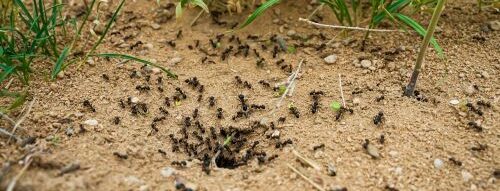
How to get rid of ants in your garden (the humane way!)
Ants can be a pest but they're actually quite a valuable asset in your garden. Find out why in this article.
🌱 All important maintenance moments for your lawn during the year. Leave your email and we will send you the lawn calendar for free.
Enter your email
Receive the lawn calendar in the mail
Enjoy a green lawn all year round!

- Order by 2PM = shipped today
- 250.000+ satisfied customers!
- 60 day satisfaction guarantee
For some, just the thought of ants makes them start itching. And while these little tiny insects CAN feel like a pest when they infringe on the house, ants are fascinating creatures that may actually benefit your garden’s natural defences against pests. However, you’re reading this article to find out how to get rid of ants in the garden, so we better not disappoint.
- What are ants?
- Where do ants come from?
- Identify ants in the garden
- Types of ants in the average UK garden
- When are ants most active?
- The Pros and Cons of ants in your garden
- How to get rid of ants in the garden naturally
- How to prevent ants in the lawn?
- How to repair your lawn after an ant invasion
- FAQ
Ants can damage your lawn, but they can also protect your garden’s plant life from more damaging lawn-munching critters, such as chafer grubs and leatherjackets. But if your grass plants are taking a hit, it might be time to learn how to control them.
But don’t run out into the garden with a kettle of boiling water like your mum in the 80s quite yet. This article will explore the benefits of ants in the garden and explain how to get rid of them if they’re causing problems.
So, get comfy and try to stop scratching. 🙂
Ants in your garden: how to get rid of them
What are ants?
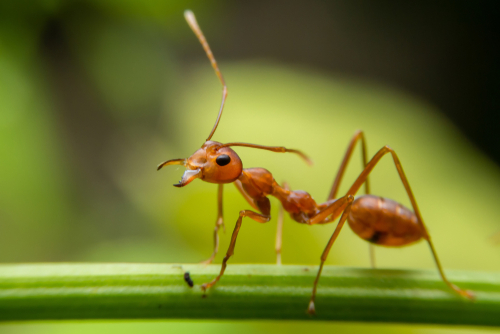
Ants are tiny six-legged insects that live in vast underground colonies, ruled by a single queen. There are tens of thousands of species of ant across the globe, with fifty found in the British Isles, but the most common varieties found in the UK are:
- Black/garden ant
- Yellow Meadow ant
- Red ant
- Red Wood ant/Horse ant
- Black Wood ant
- Black stinging ant
We’ll explore the characteristics of some of these common UK ants later in the article.
Ants are prevalent in hot climates, ranging from 2mm to 25mm, depending on their habitat. With large heads and slender oval abdomens attached to their thorax (the equivalent of our ribcage), the sections of their bodies are connected by a tiny waist section.
These tiny insects are surprisingly strong and extremely hard working and can benefit your garden’s ecosystem and biodiversity. They control pests naturally, aerate the soil, and help improve pollination rates (more about that later).
Where do ants come from?
Well, this is a bit of a chicken and egg question, really. Ants have roamed the earth far longer than humans, first appearing (it’s believed) in the mid-Cretaceous period, around 110-130 million years ago. In contrast, humans evolved from our australopithecine ancestors a mere 2 million years ago (home sapiens just 200,000 years ago!).
So, perhaps the ants might be wondering where we came from, with our strange land-locked obsessions and mobile phones! Indeed, ants are to be found almost everywhere on dry land on Planet Earth (with the exception of Antarctica, the Arctic, and a few random islands).
So, living underground is a swarm of ants across the entire planet.
Identify ants in the garden
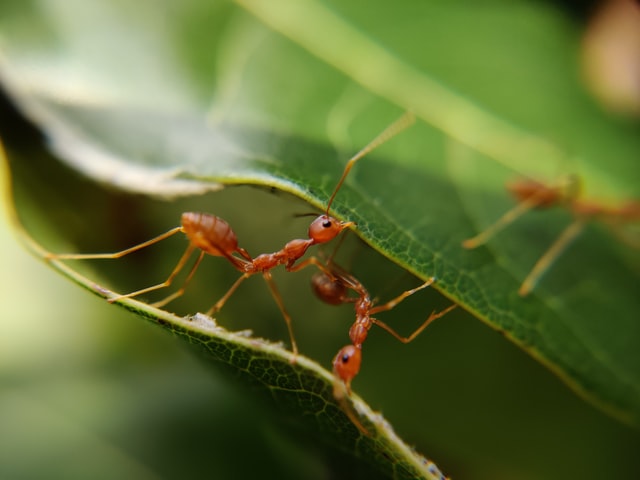
UK-based ants are usually tiny – a couple of millimetres at the most – while the largest known species (now extinct) was 6.1cm in length with a 15cm wingspan – aptly named T. giganteum.
Ants live and work in colonies – they form giant, coordinated “superorganisms”. They communicate via pheromones, sending out signals that alert each other to danger or the location of food. They work as part of a collective whole – with a bias on the colony’s wellbeing over their own.
I mentioned that ants are hard workers. In fact, they can carry over three times their own body weight and hold 100-times their body weight when dangling.
Queen ants can live for decades, while the average worker ant lives a much shorter existence, from a few weeks to several years. The oldest known queen ant lived for 30 years!
So, pub quiz facts aside, let’s explore the ant species we commonly find in the UK.
Types of ants in the average UK garden
Black ants in the garden
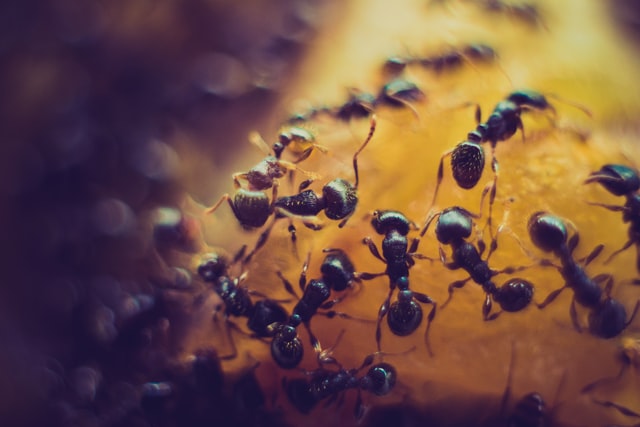
Lasius niger (or black ants) are the most common species in the British Isles. You’ll recognise their shiny black bodies, around 3-5mm long. They live in colonies of around 7000 other members underneath paved surfaces, but their nests can be huge – housing up to 40,000 black ants.
If you see small holes in the joints between paving slabs, it’s likely to be the entrance to an ant nest – so if ants are causing a problem, you’ll need to find the location of their colony.
However, black ants don’t pose any health risks to humans; they don’t bite, sting, spray formic acid, or damage property. Their jaws are too weak to break through human skin, so there’s no reason to panic if you spot a nest.
Black ants feed on sugary substances, such as rotting fruit and nectar. But the most significant problem ants cause in the garden is their dutiful farming of aphid varieties – aphids produce honeydew, which black ants love.
So, while black ants aren’t generally harmful and will feed on many lawn predators, such as leatherjacket grubs, they can cause an aphid problem. They breed aphids near their nest, and the honeydew can damage your grass while attracting lawn diseases.
If black ants are causing problems for your lawn, it’s best to try to relocate the colony. Sprinkle peppermint or cinnamon near the entrance to the nest, and the ants are likely to move on somewhere else.
Yellow ants in the garden
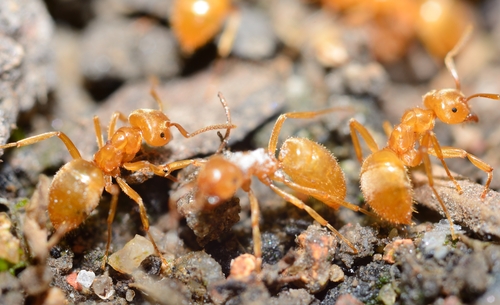
The Lasius flavus is a slightly smaller (2-4mm) golden-coloured ant, which is less common in the UK.
Yellow ants build their nests underneath your grass plants. This is good for your lawn because they aerate the soil around the roots.
Again, they feed on the honeydew of the root aphid, but these are generally harmless to your lawn. However, if a yellow ant nest grows too large, you might notice bald spots around the lawn surface.
So, yellow ants are a little blessing – especially in heavy clay soil. They’re completely harmless, just like the black ant.
Red ants in the garden
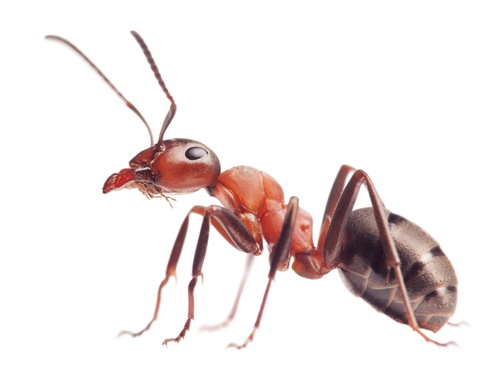
Formica rufa (or red worker ants) are considered an endangered species in the UK. They’re bright red in the middle with a red head.
Red wood ants are master architects, building nests that emerge from deep underground, reaching up to 2m in height above the soil surface. And while black and yellow ants are harmless, a red ant will deliver a painful sting, which has helped earn their nickname: fire ants.
So, be careful when approaching these fiery little insects.
You’ll find red ants underneath stones and logs in your garden. And while they’re active throughout the year, you probably won’t notice them until they sprout wings during hot summers and fly off in search of new colonies.
When are ants most active?
Ants thrive in warm weather – the higher the temperature, the more active ants become. During the winter, most colonies rest, feeding on foraged reserves until the spring.
Most ants emerge from their winter slumber in the spring and are most active during the summer, where you’ll see them working from sunrise to sunset.
The Pros and Cons of ants in your garden
Ants in the garden are a double-edged sword because while they support biodiversity, they can also cause damage to your lawn and your plants.
The Pros of ants in the garden
Ants help control garden pests by feeding on their eggs and young. In fact, ants can be such an effective biological pest deterrent that some farmers introduce them to help eradicate crop-destroying insects and bugs.
Additionally, ants help improve pollination, which is super-important now that many of our native pollinators are finding themselves endangered in the UK. Ants march from flower to flower, feeding on their nectar and pollinating the flower as they go.
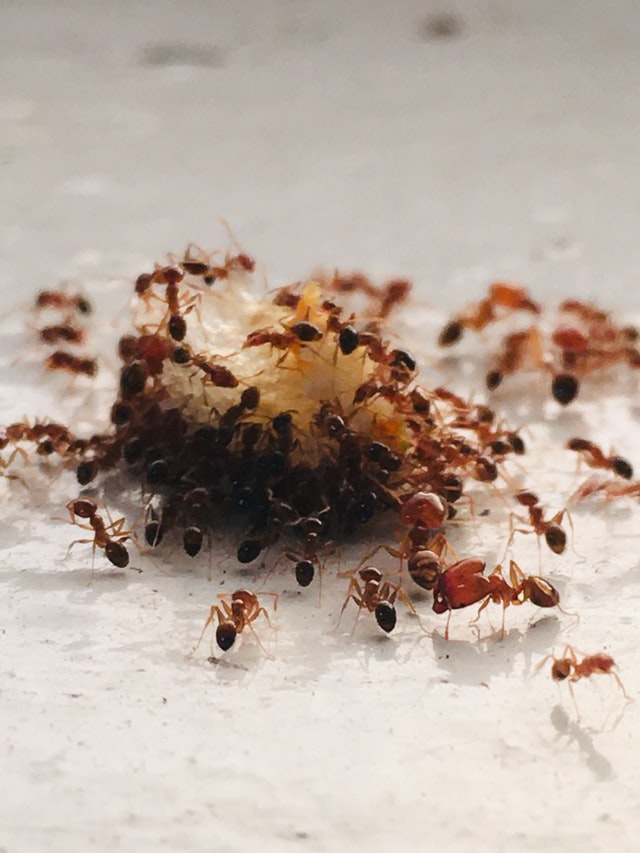
Finally, ants support your garden’s ecosystem as they dig their underground tunnels, which helps water, oxygen, and nutrients reach your plants’ roots, including your lawn. And they help fertilise your soil as they speed up decomposition of organic materials, such as dead insects and fallen leaves. And while ants help keep your soil healthy by feeding on waste materials and harmful bugs, they make an excellent lunch for larger organisms like frogs and birds. Working together, this food cycle helps prevent lawn pests.
Cons of ants in the garden
While a few ants in your backyard are unlikely to cause a problem, a large colony can create issues for your lawn, your veg plot, or your flower beds.
The main problem is the pests that ants feed upon. Aphids, in particular, naturally produce a sugary nectar-like honeydew – and just like we farm cows to feed ourselves, ants farm aphids. And anyone who has tried to grow fruiting veg will know: aphids can plough through a healthy plant in no time.
And, in large numbers, aphids can damage your lawn.
Red ants, as explained, can sting you, causing a painful skin welt that can last for several days.
Other than that, UK ants are unlikely to cause property damage, so – if you can – leave them be. We all belong on the earth and need to live together.
How to get rid of ants in the garden naturally
If the ant population in your garden is causing problems, you’ll want to get rid of them. But there are humane ways to move your ant guests. And, in this case, focusing on individual ants is pretty pointless – you’ll need to work on the colony.
Fight ants with an inverted flower pot
Fill a flower pot with soil and place it upside-down over the opening of your ant nest. After a couple of weeks, you’ll find that the ants have populated the flower pot.
Remove the pot at this stage, and empty it into your compost or sprinkle it into your chicken coup – your chucks will enjoy a tasty meal of live ants.
Remove the queen
You can find the queen by digging into the nest and finding the largest ant – that’s the queen. Obviously, she won’t be draped in ermine, and she won’t be wearing a crown.
When you’ve found the queen, carefully remove her from the nest and place her somewhere in your garden where the colony won’t cause a nuisance. The workers will follow, and they’ll create a new nest wherever the queen lays her hat.
Fight ants with nematodes
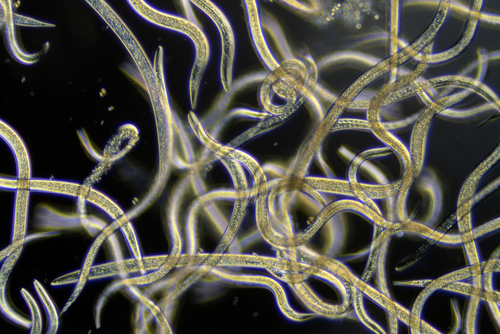
Parasitic nematodes are super-useful biological deterrents, helpful in killing off chafer grubs and leatherjackets and getting rid of ants.
Nematodes are widely available online and in garden centres and will invade the ant colony and feed on ant larvae, thereby ensuring the demise of the future generation. They also chase adult ants out of the nest. They tend to die off once the food source has disappeared.
Fight ants with vinegar
Ants really don’t like vinegar (I’m not sure what they put on their chips?!).
Mix two parts water with one part vinegar, and pour it into the ant nest. Be super careful because plants aren’t fans of acidic vinegar either and will die if they come into contact with it.
Fight ants with garlic
Just like vampires (and your grandad), ants hate the smell of garlic.
Sprinkle garlic powder over the nest, and pour some water over it. The smell will distract the ants, and they’ll forget their way to their food source. As a result, the ants in the nest won’t feed and will die.
Fight ants with an ant bait box
The location of the ants’ nest isn’t always obvious. So, if you’re struggling to find the colony, place a bait box on a paved surface close to the ants’ typical walking route. They’ll walk through the powder in the box and leave a powder trail as they journey back to the nest.
And hey presto, you’ll know the nest’s location.
A bait box works for around a month, but don’t leave it out in the rain – the chemical can wash into your garden and cause damage.
How to prevent ants in the lawn?
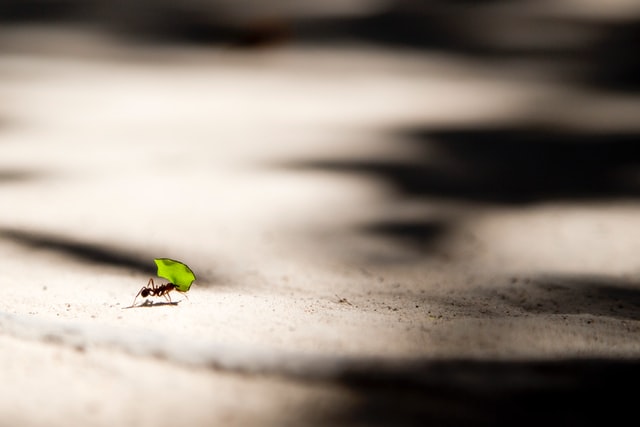
Prevention is always better than cure. So, to avoid ants from invading and damaging your lawn, follow these tips:
- Clean up organic waste – ants are attracted to plant-, animal-, and food remains. Therefore, clean your garden regularly, removing dead and diseased plants, flowers, twigs, and leaves. And keep your food waste in enclosed containers – don’t leave crumbs if you enjoy an al fresco lunch – ants will have a field day.
- Sweep your patio or terrace – ants live under paving slabs and between tiles, so pay extra attention to your patio or terrace. Sweep regularly, and clean the tiles with a patio cleaner to ensure there’s nothing that’s going to attract ant populations.
- Control aphids in your garden – removing the ants’ favourite meal is a sure way to make your garden less hospitable to an ant invasion. Spray the leaves of your plants regularly with water to flush away the aphids, or use an eco-friendly lice spray to eradicate the problem.
- Keep your grass short – ants seek three things in your garden: water, food, and shelter. Keeping your grass short minimises the potential for shelter, making your garden less hospitable to a colony.
- Plant strongly scented plants – ants dislike strong smells (see garlic, above). So, planting marigolds, jasmine, and lavender is sure to keep the ants at bay. If it hasn’t worked, sprinkle a few strong-smelling plant leaves near the nest.
How to repair your lawn after an ant invasion
The most visible damage likely to occur from an ant invasion is bald spots, and it’s vital to tackle these to prevent weeds from growing in place of the dead grass.
So, overseed wherever bald spots occur. As long as the soil temperature is over 10℃, your new seed will germinate within a couple of weeks, bringing new life and vitality to your lawn. Get the lowdown with our expert guide to overseeding.
Feel more informed about ants in your garden? Or do you need more info?
I hope you’ve got all the info you might need to control ants in your lawn, but if you have any questions, don’t hesitate to get in touch.
Drop us an email with your question, and we’ll get back to you as soon as we can.
Thanks for reading.
FAQ
Ants are attracted to sugar sources. So, if there are lots of ants in your garden ensure that you: dispose of your food waste in enclosed bins; clear food scraps after eating outside; remove organic matter, such as fallen leaves and dead insects from your lawn.
Most ants found in the UK are entirely harmless, and can actually improve the biodiversity of your garden. Red ants can sting, however, so be careful when coming into contact with them. Black and yellow ants won’t bite or sting you.
Ants can cause bald spots on your lawn and can encourage aphids that will eat your garden vegetation. However, far from being a pest, ants actually help aerate your soil, getting water, oxygen, and nutrients to your plants’ roots, as well as serving as tasty meals for frogs and birds. So, don’t kill them if you can avoid it.
-
Firebugs in the Garden: What now?!Firebugs in your garden? SPOILER ALERT – they're benign! They won't harm you or your garden. Find out how these interesting bugs contribute to your garden's ecosystem.Read more
-
How to Prevent and Control Scale InsectsScale insects are tiny sap-loving insects that can kill your plants if left to their own devices. How to identify them, treat the problem, and nurse your plants back to health after an infestation.Read more
-
How to Prevent and Control Mealybugs on your Plants (and aftercare)Mealybugs look like little fluffy specks of mould, but they'll quickly destroy your house plants or greenhouse plants. Learn how to spot an infestation and what to do to prevent the problem from spreading.Read more
-
Recognise and Control Mares Tail in your garden: from Identification to EradicationMares tail (aka Horsetail) is an invasive weed with deep roots, which make it a real challenge to eradicate. Find out about this fascinating weed (and find out how to tackle the problem).Read more
-
How to get rid of flies: the best tips and tricks!Having flies buzzing around the house is not only annoying, it can pose a significant health hazard. Find out how to get rid of flies without resorting to harsh chemicals and poisons.Read more
-
Whitefly on your plant: Prevention, Control, and TreatmentWhitefly are tiny little insects that quickly kill your plants and attract ants! Find out how to prevent and control an infestation.Read more
-
How to Get Rid of Wasps: Tips and Tricks!Wasps! What a nightmare! While these aggressive little insects offer a painful sting, there's more to the wasp that you might first think. Prevent them arriving with out handy tips.Read more
-
How to Identify, Fight, and Prevent Vine WeevilThe vine weevil is a destructive little pest. Recognise the signs of infestation to prevent the widespread damage this critter can do to your garden plants.Read more
Leave a comment
Your answer will be displayed on the site and the interested party will be notified by email.
Leave a comment
Have a question or want to share your experience? Leave us a comment.

- Order by 2PM = shipped today
- 250.000+ satisfied customers!
- 60 day satisfaction guarantee

- Order by 2PM = shipped today
- 250.000+ satisfied customers!
- 60 day satisfaction guarantee

- Order by 2PM = shipped today
- 250.000+ satisfied customers!
- 60 day satisfaction guarantee

🌱 All important maintenance moments for your lawn during the year. Leave your email and we will send you the lawn calendar for free.
Enter your email
Receive the lawn calendar in the mail
Enjoy a green lawn all year round!





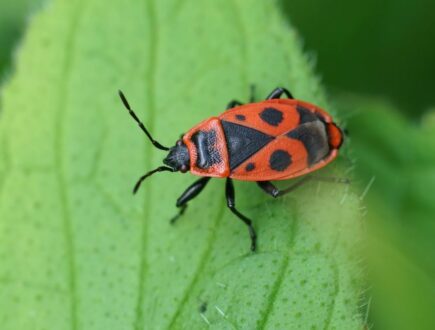
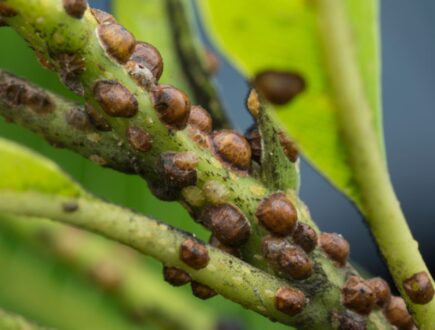
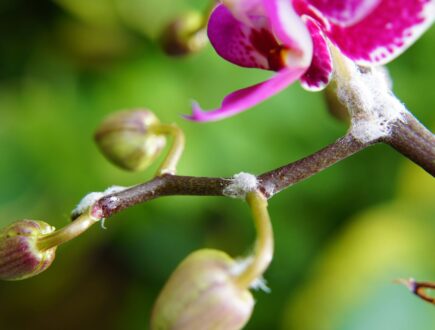

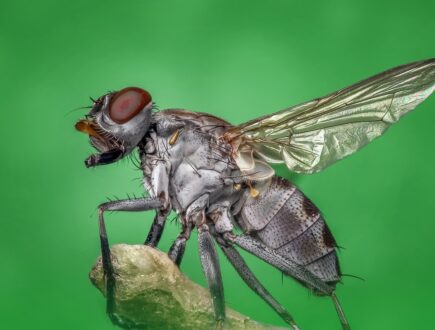
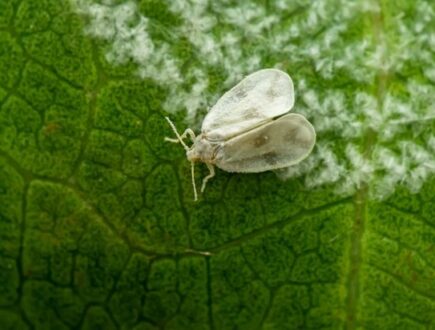
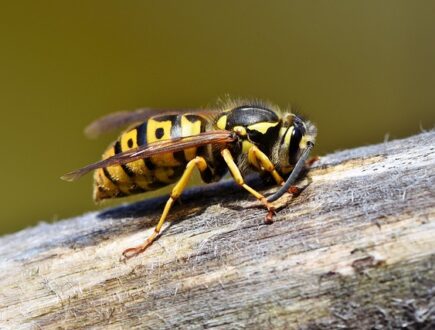
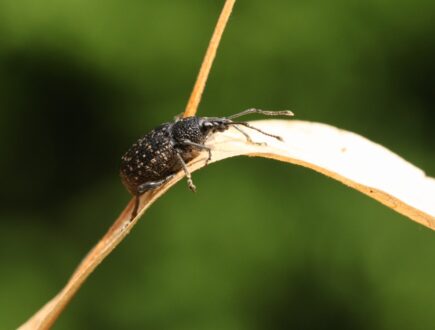



 Summer Deal! Get 15% off the
Summer Deal! Get 15% off the 




Comments (0)
There are no comments yet. Well then, what are you waiting for to
Be the first to write your comment!inaugurate this pretty page?
Do you have some comments?